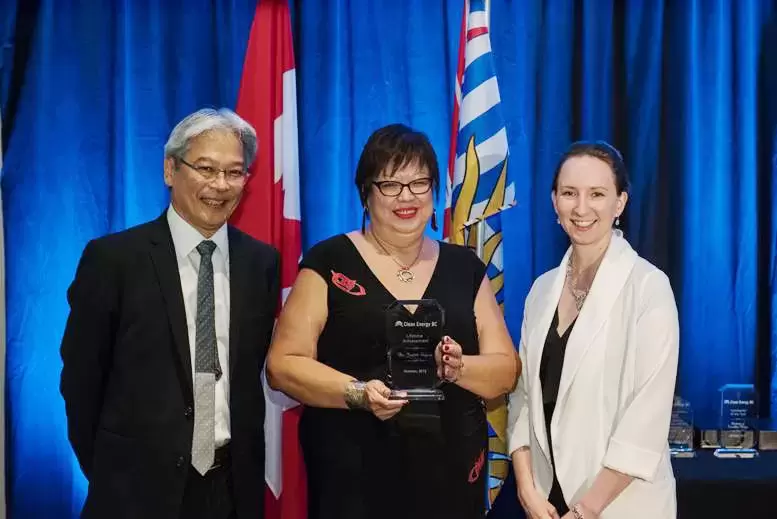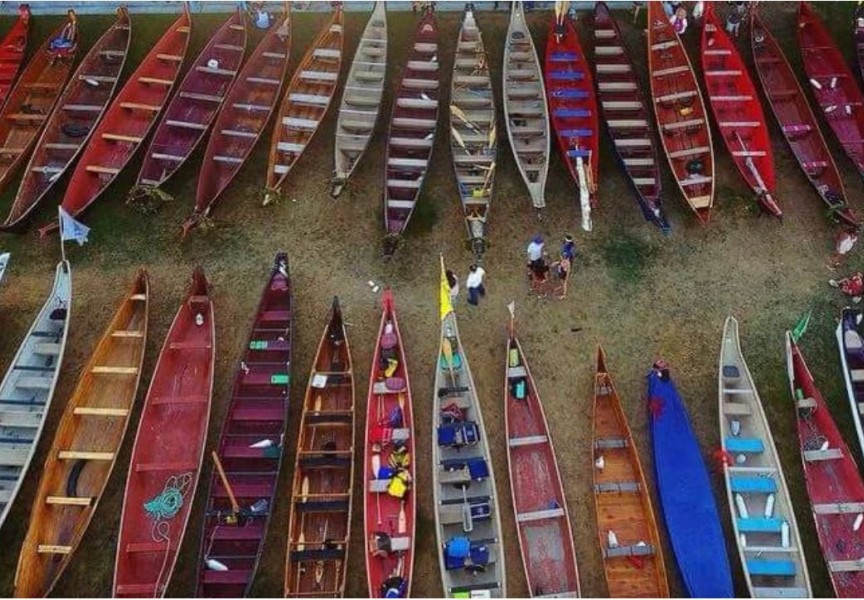Kekinusuks Judith Sayers has received a Lifetime Achievement Award from Clean Energy BC.
Sayers, who is currently an adjunct professor with the Peter Gustavson School of Business at the University of Victoria, while operating her own consulting business, Sayers Strategic Advice, has served on the Clean Energy B.C. board of directors for four years.
In 2001, Sayers was elected chief councillor for Hupacasath First Nation when her Nation began working on what would become the Upnit Power Project. It was a steep learning curve, she said.
“We started doing the preliminary work in 2001, but also in 2001, we made a proposal to the BC Energy Plan. I went to make a presentation, but of course, I didn’t know then what I know now. But I have been involved in clean energy for a very long time.”
In 2002, the province accepted a Hupacasath proposal to build a 6.5-megawatt (Mw) run-of-river hydro station on China Creek, in partnership with Synex Energy Resources Ltd, Ucluelet First Nation and the City of Port Alberni.
Upnit Power Corp has been generating electricity for a decade, and the project has served as a guiding light for First Nations clean energy projects right across the province.
For Sayers, the Upnit project was the beginning of a long journey in the clean energy industry. She said receiving the Lifetime Achievement Award – the first woman and the first First Nations person so honoured – has been a little overwhelming. And she has no intention of retiring from the field.
“It started out with the China Creek project, but that has led to a number of different things,” Sayers said. “I was on the Canadian Electricity Association Public Advisory Committee for five years.
“I’ve done a lot of public speaking on clean energy and I’ve done a lot of op-eds. I’ve been working with the First Nations Clean Energy Working Group and I’ve just finished developing a toolkit for clean energy for First Nations that will become a public document in the next few weeks.”
The toolkit will be distributed to each BC First Nation, both to encourage clean energy development and to provide the expertise and guidance necessary to bring a project to fruition.
Sayers has also joined the effort to stop the Site C Dam project on the Peace River. The $8 billion project has been on the drawing board since the 1960s, but wasn’t approved by the province until December 2014.
Now called the Site C Clean Energy Project, the dam would produce enough electricity to power 450,000 homes, but it would also flood tens of thousands of hectares of forest and agricultural land in the traditional territories of the Treaty 8 and West Moberly First Nations. Sayers believes BC First Nations can play a significant role in developing small-scale projects as an alternative to mega-dams.
“Sechelt First Nation, two years ago, won a Stewardship Award from [BC] Clean Energy, and they were also honoured with a Blue Planet Award, because their project rehabilitated the whole area. They brought back pink salmon that hadn’t been there for years.
“This year, Chehalis [First Nation] also won the Stewardship Award. They did a lot of work to bring back the fish in their area. So these projects can be very beneficial if you do them right.”
Currently, however, the province has fixated on Site C as the wave of the future, and at the same time, has limited the opportunities for clean energy development to a maximum capacity of 45 Mw a year (actually three 15 Mw projects. The application process is now backed up for the next three years, Sayers said.
“There are a lot First Nations who would like to build projects of over 200 Mw. Sooke First Nation would like to [build a] wind farm, with our friends, Island Timberlands. There are other Nations up North who would like to do the same thing, or to build biomass projects. But to be viable, they need to be bigger than 15 Mw.”
Sayers said the hydro industry is full of ongoing uncertainties, and licensees do not have the sort of long-term security they would like.
“It’s an industry we’re always fighting for. But in the past two years, clean energy has brought in $4 billion in investment. So it’s not a small industry. There are now more jobs in clean energy than there are in the tar sands.”







